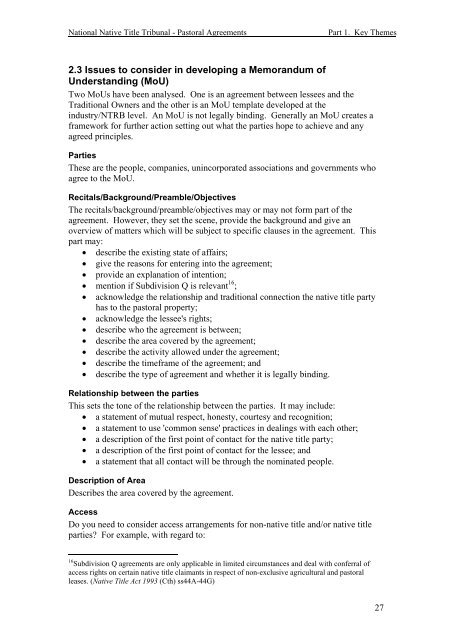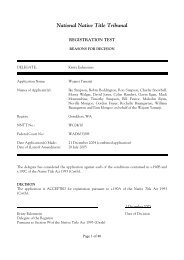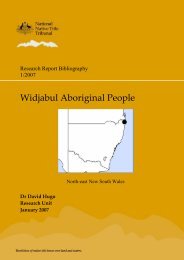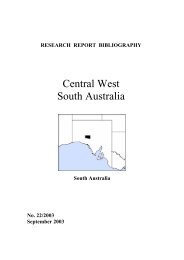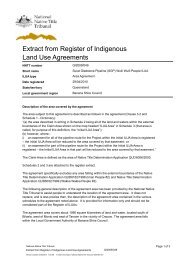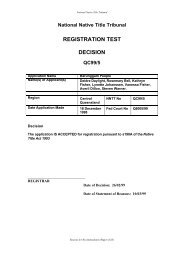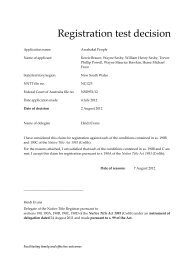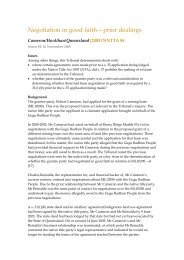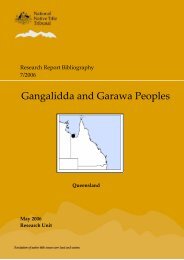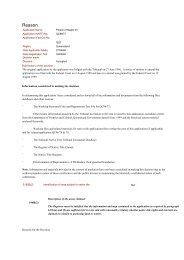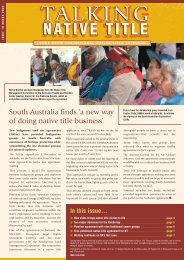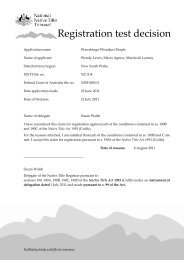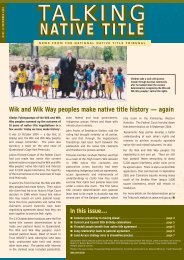Pastoral Agreements: Content Ideas - National Native Title Tribunal
Pastoral Agreements: Content Ideas - National Native Title Tribunal
Pastoral Agreements: Content Ideas - National Native Title Tribunal
Create successful ePaper yourself
Turn your PDF publications into a flip-book with our unique Google optimized e-Paper software.
<strong>National</strong> <strong>Native</strong> <strong>Title</strong> <strong>Tribunal</strong> - <strong>Pastoral</strong> <strong>Agreements</strong><br />
Part 1. Key Themes<br />
2.3 Issues to consider in developing a Memorandum of<br />
Understanding (MoU)<br />
Two MoUs have been analysed. One is an agreement between lessees and the<br />
Traditional Owners and the other is an MoU template developed at the<br />
industry/NTRB level. An MoU is not legally binding. Generally an MoU creates a<br />
framework for further action setting out what the parties hope to achieve and any<br />
agreed principles.<br />
Parties<br />
These are the people, companies, unincorporated associations and governments who<br />
agree to the MoU.<br />
Recitals/Background/Preamble/Objectives<br />
The recitals/background/preamble/objectives may or may not form part of the<br />
agreement. However, they set the scene, provide the background and give an<br />
overview of matters which will be subject to specific clauses in the agreement. This<br />
part may:<br />
• describe the existing state of affairs;<br />
• give the reasons for entering into the agreement;<br />
• provide an explanation of intention;<br />
• mention if Subdivision Q is relevant 16 ;<br />
• acknowledge the relationship and traditional connection the native title party<br />
has to the pastoral property;<br />
• acknowledge the lessee's rights;<br />
• describe who the agreement is between;<br />
• describe the area covered by the agreement;<br />
• describe the activity allowed under the agreement;<br />
• describe the timeframe of the agreement; and<br />
• describe the type of agreement and whether it is legally binding.<br />
Relationship between the parties<br />
This sets the tone of the relationship between the parties. It may include:<br />
• a statement of mutual respect, honesty, courtesy and recognition;<br />
• a statement to use 'common sense' practices in dealings with each other;<br />
• a description of the first point of contact for the native title party;<br />
• a description of the first point of contact for the lessee; and<br />
• a statement that all contact will be through the nominated people.<br />
Description of Area<br />
Describes the area covered by the agreement.<br />
Access<br />
Do you need to consider access arrangements for non-native title and/or native title<br />
parties For example, with regard to:<br />
16 Subdivision Q agreements are only applicable in limited circumstances and deal with conferral of<br />
access rights on certain native title claimants in respect of non-exclusive agricultural and pastoral<br />
leases. (<strong>Native</strong> <strong>Title</strong> Act 1993 (Cth) ss44A-44G)<br />
27


